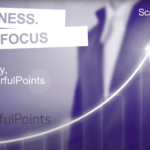
When I started working with PowerPoint in 1994, there was an option for both a presentation’s slide transitions and animations called “random”. Basically, the system would put any of the transitions and animation in and, as speaker, you just got what you got…including spinning, whizzing, bouncing things entering and exiting the screen. It was no wonder animations got a bad name! As a result many people don’t animate today and it is costing them results: animation is an important part of modern-day presenting.
As the speaker, it’s your job to manage what people are focussing on during the presentation. As we use the same part of the mind to read as we do to listen, if people are reading, they aren’t listening to you so you have lost control…something you don’t want to have happen.
I challenge you, the next time someone dumps a big load of information on a slide, don’t read it, focus on the speaker. I bet you can’t without a conscious effort.
Animation for animation’s sake is a fool’s errand. Good animation supports your narrative and helps you keep the audience focussed and engaged. For most people, simple fade’s & wipes are all that’s needed. In some cases a much more sophisticated, multimedia approach can help. As I said: animation is an important part of modern-day presenting




